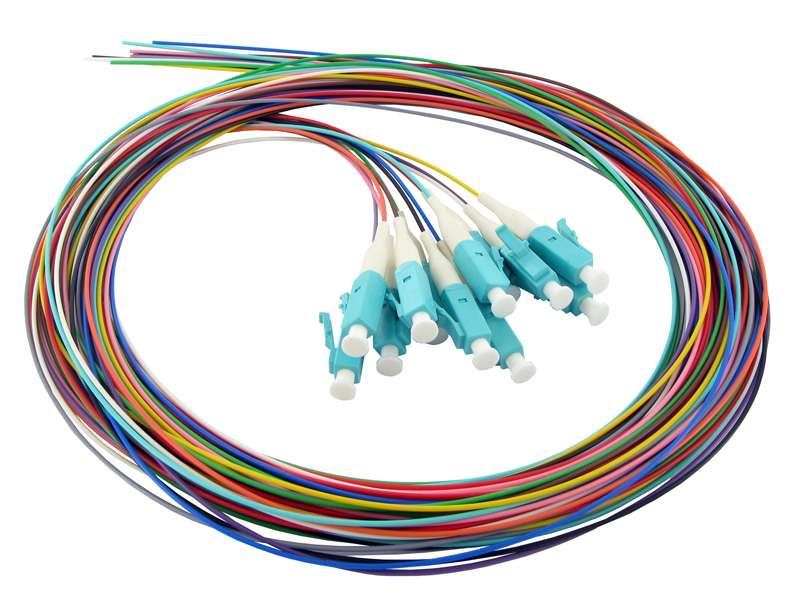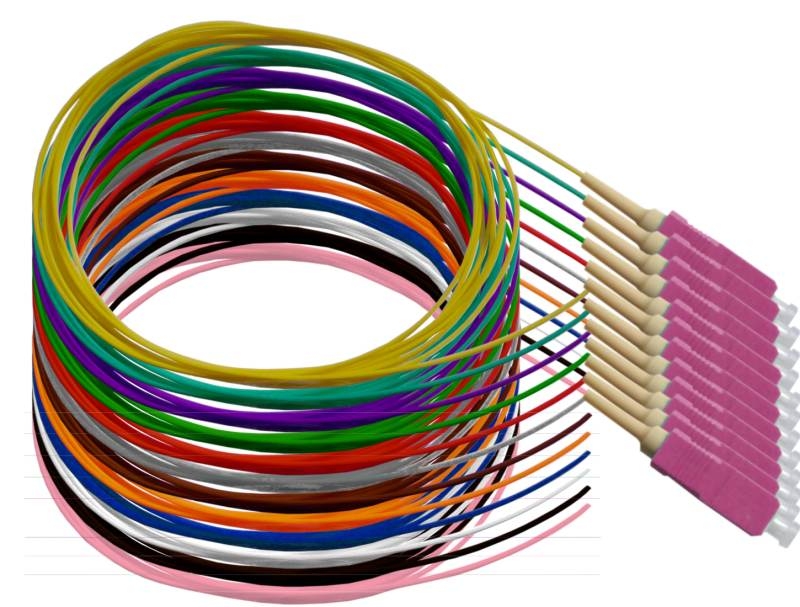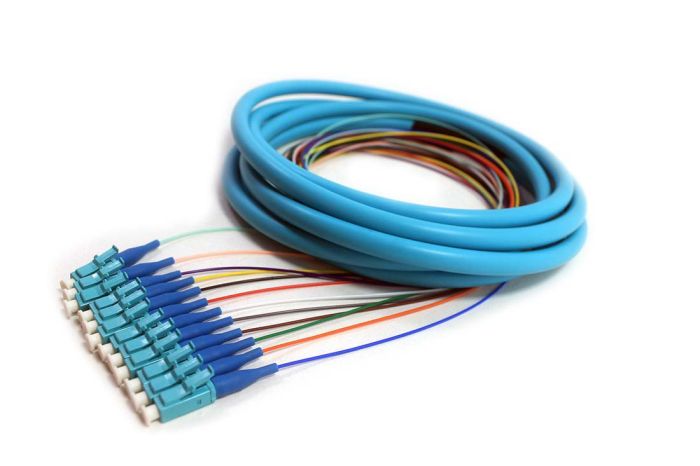Understanding FTTX Fiber Pigtail: Types and Technology
Fiber Optic Pigtails
Fiber optic pigtails play a crucial role in network installations, especially in FTTX technology. These pigtails are essential components that facilitate the connection between optical fibers and other devices within the network infrastructure. Understanding the various types and technologies associated with FTTX fiber pigtails is fundamental for successful network deployment. Additionally, the significance of fiber optic connectors cannot be overstated in FTTX technology, as they ensure seamless connectivity and reliable performance within the network.
FTTX Fiber Pigtail Types
When it comes to FTTX fiber pigtail types, understanding the differences between single-mode and multi-mode pigtails is crucial for network installations. Let's delve into the distinguishing characteristics of each type and explore their respective applications and benefits.
Single-mode vs. Multi-mode Pigtails
Distinguishing Characteristics: Single-mode pigtails are designed to carry a single ray of light, allowing for longer transmission distances with lower attenuation. On the other hand, multi-mode pigtails support multiple pathways for light, making them suitable for shorter distances.
Applications and Benefits: Single-mode pigtails are ideal for long-haul telecommunications and data networks due to their ability to transmit over greater distances with higher bandwidth. Multi-mode pigtails, on the other hand, are commonly used in shorter reach applications such as local area networks (LANs) and data centers.
Connector Types and Technologies
Overview of Various Connector Types: FTTX fiber pigtails utilize various connector types such as SC, LC, and ST connectors, each with its own unique design and functionality tailored to specific network requirements.
Technological Advancements: Technological advancements have significantly impacted FTTX connector design, leading to improvements in performance, reliability, and ease of installation.
By understanding the distinctions between these pigtail types and connector technologies, network installers can make informed decisions that align with their specific infrastructure needs.
Significance of Fiber Optic Connectors
In the realm of FTTX networks, fiber optic connectors play a pivotal role in ensuring seamless connectivity and reliable performance. These connectors serve as the crucial link between optical fibers and various network devices, making them indispensable components in FTTX network installations.
Role of Connectors in FTTX Networks
Fiber optic connectors are instrumental in establishing the connections that enable data transmission within FTTX networks. Their primary function is to join optical fibers to other fibers or to active devices such as transmitters and receivers. The quality and precision of these connections directly impact the overall performance and reliability of the network. A secure and efficient connection is essential for maintaining optimal signal strength and minimizing data loss throughout the network infrastructure.
Connector Compatibility and Standards
Industry standards play a vital role in ensuring the compatibility and seamless integration of fiber optic connectors within FTTX networks. Adhering to these standards is imperative for achieving interoperability among different components and devices. By following established guidelines and specifications, network installers can guarantee that fiber optic connectors meet the necessary requirements for reliable performance and consistent connectivity.
By understanding the significance of fiber optic connectors, their role in FTTX networks, and the importance of adhering to industry standards, network professionals can make informed decisions when deploying FTTX technology.
FTTX Technology Benefits
Enhanced Bandwidth and Speed
FTTX technology brings about a significant enhancement in bandwidth and data transmission speed, revolutionizing network installations. By utilizing fiber optic technology, FTTX networks can deliver unparalleled speeds and bandwidth capacity, meeting the demands of modern applications and services.
The benefits of high-speed connectivity offered by FTTX technology are multifaceted. Firstly, it enables seamless streaming of high-definition media, supports real-time video conferencing, and facilitates rapid file transfers. Moreover, businesses can leverage this high-speed connectivity for efficient cloud computing, enabling quick access to data and applications from anywhere.
The enhanced bandwidth and speed provided by FTTX technology pave the way for a more streamlined user experience, whether for entertainment or professional purposes. As the digital landscape continues to evolve rapidly, the need for robust and high-speed connectivity becomes increasingly essential.
Scalability and Future-Proofing
One of the key advantages of FTTX technology is its inherent scalability features that allow for seamless expansion of network infrastructure. As data demands grow and network requirements evolve, FTTX technology provides the flexibility to accommodate these changes without significant overhauls or disruptions.
By embracing FTTX technology, organizations can future-proof their network infrastructure against obsolescence. The scalability inherent in FTTX networks ensures that as technologies advance and data requirements increase, the network can adapt and expand accordingly. This forward-looking approach safeguards investments in network installations by mitigating the need for frequent upgrades or replacements.
In essence, the scalability and future-proofing capabilities of FTTX technology position it as a reliable solution for meeting the evolving needs of modern network installations.
Fiber Optic Pigtails in Modern Networks
In modern network installations, FTTX fiber pigtails play a pivotal role in ensuring seamless connectivity and reliable performance. The advancements in FTTX technology have led to enhanced connectivity, offering benefits such as high-speed data transmission and scalability for future network expansion. Understanding the significance of fiber optic connectors is essential for optimizing FTTX networks, as they serve as the crucial link between optical fibers and various network devices, ensuring efficient data transmission.
The role of FTTX fiber pigtails in modern network installations
Benefits and advancements in FTTX technology for enhanced connectivity
Importance of understanding fiber optic connectors and their significance in FTTX networks
See Also
Understanding FTTx Technology and Fiber Optic Cables
Unveiling the Advantages of 19-Core Fiber Optic Cabling in Telecommunication Networks
The Future of Multi-Core Cabling in Telecommunications: Trends and Advancements in 2024
Comparing FTTH Network Architectures: Advantages and Disadvantages
About US
Follow Us
AnetFiber company's main products are indoor and outdoor optical fiber cables, outdoor waterproof pre-connected fiber-to-the-home products, PLC optical fiber splitters, optical fiber jumpers and pigtails, MTP®/MPO high-density big data product solutions, optical fiber field quick connectors and research and development molding, injection molding and production of optical fiber distribution boxes, optical fiber chassis cabinets, the market has expanded to the world, Europe, America, Asia, the Middle East and Latin America.
Address
Shenzhen City, Baoan District, Yanluo Street, Tangxiayong Community, Yangyong Industrial Road, Tonggangda New Energy Vehicle Park 406
Contacts
+86 199 2655 3586




